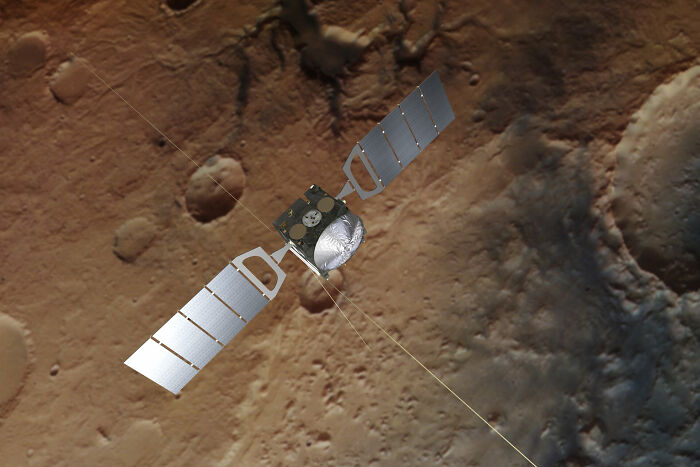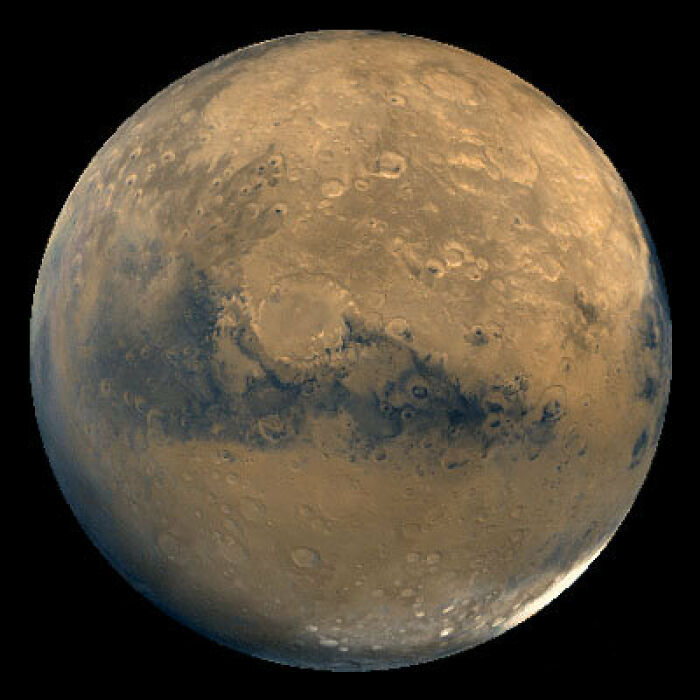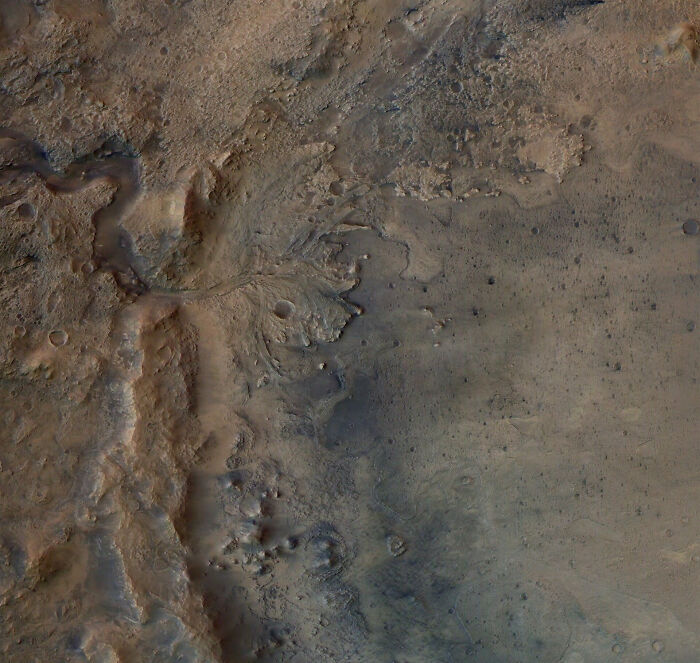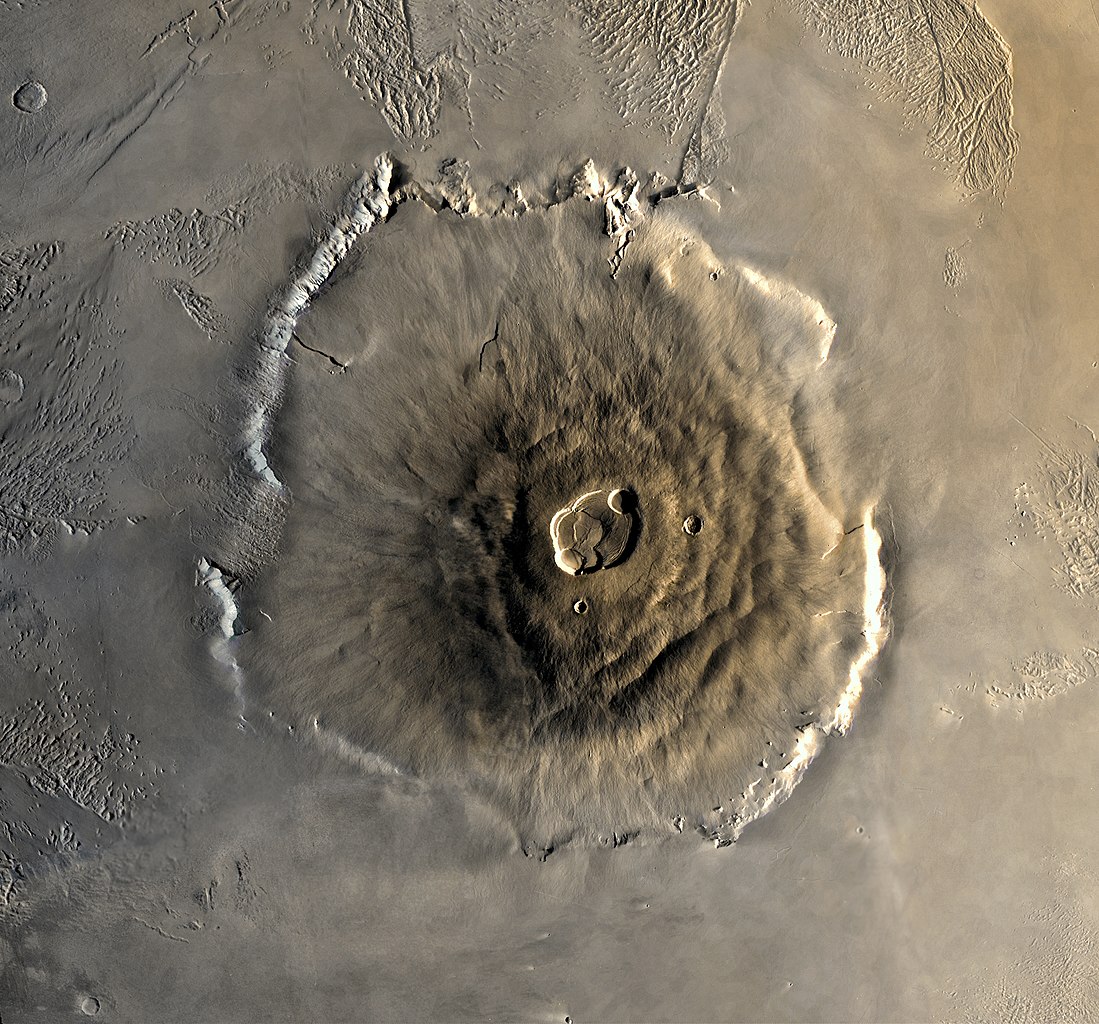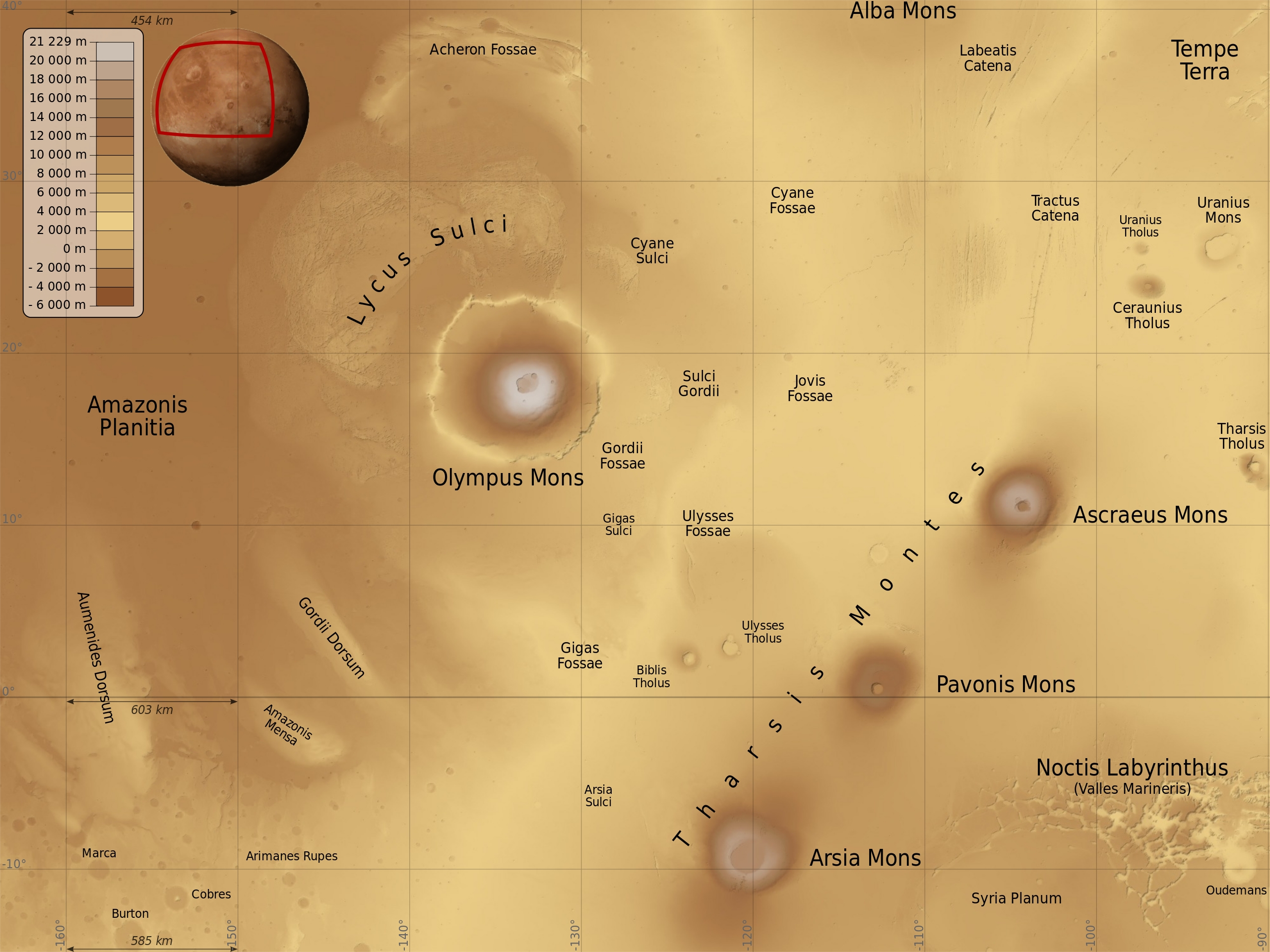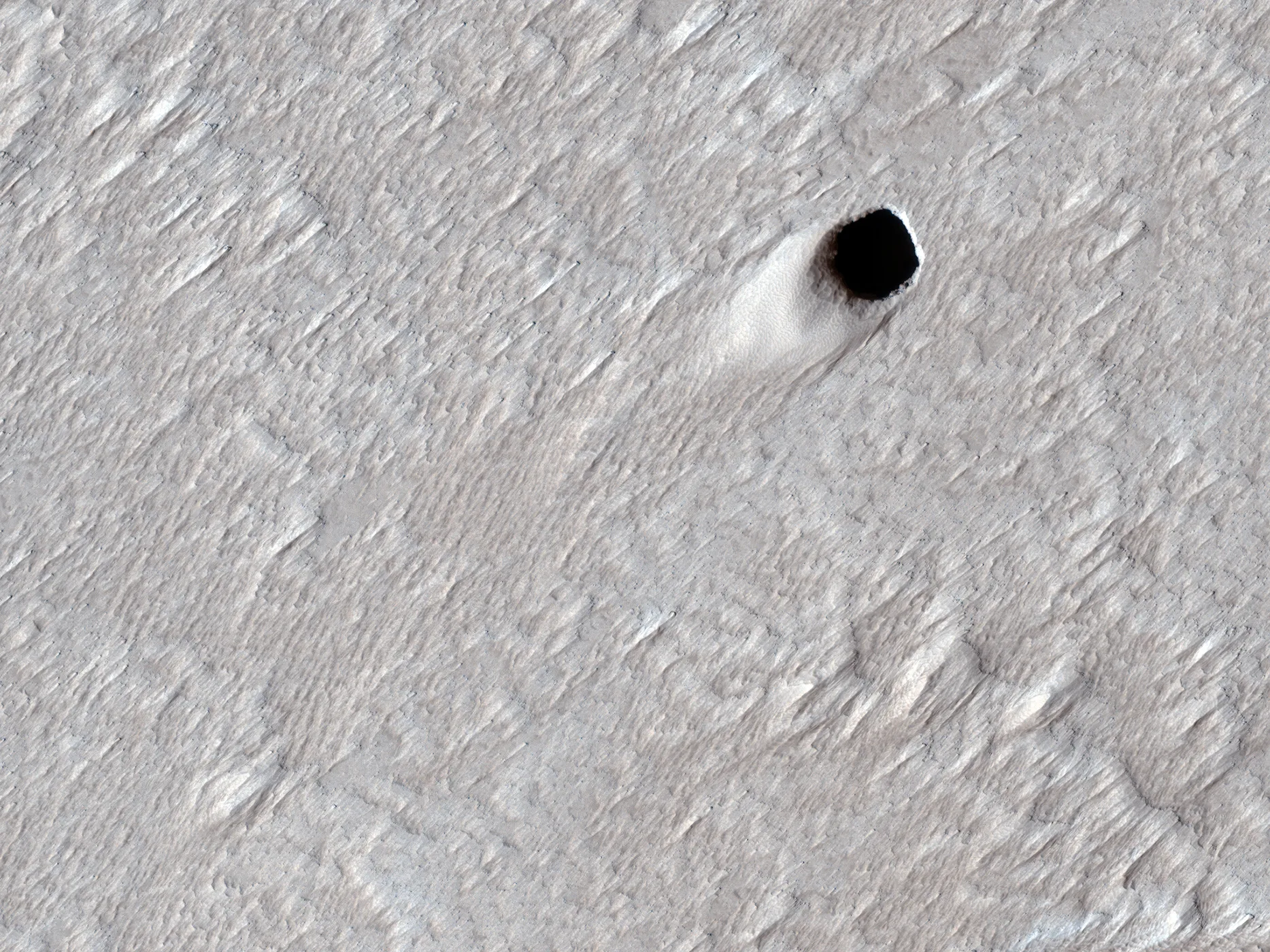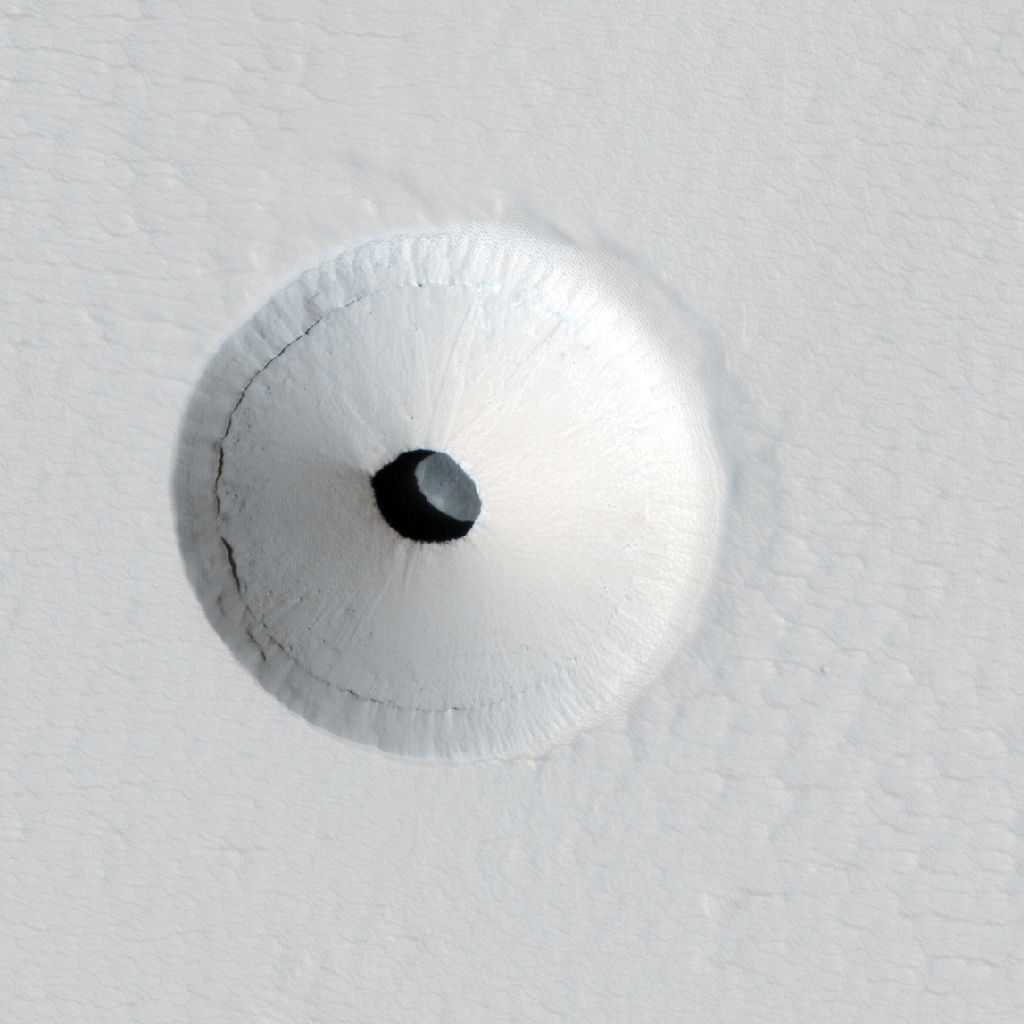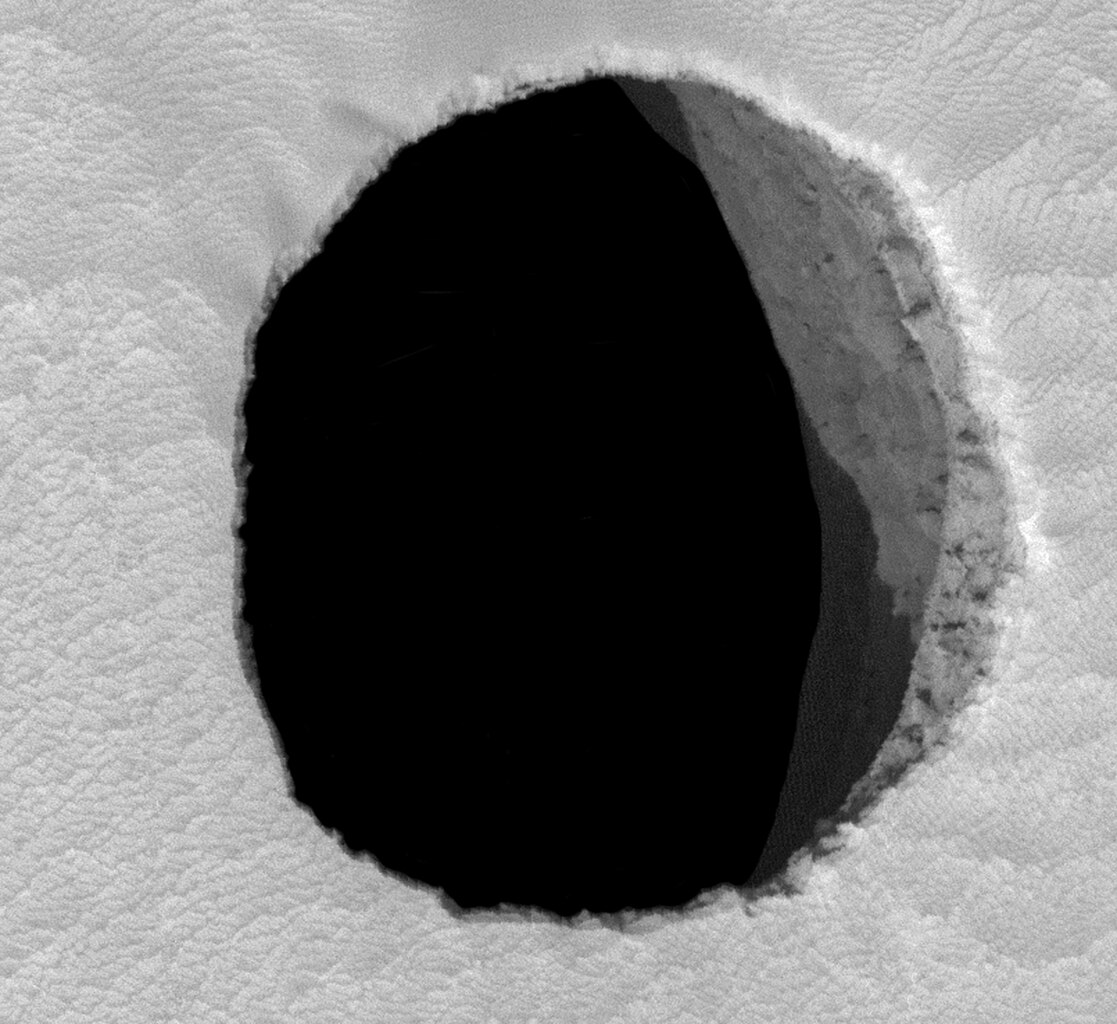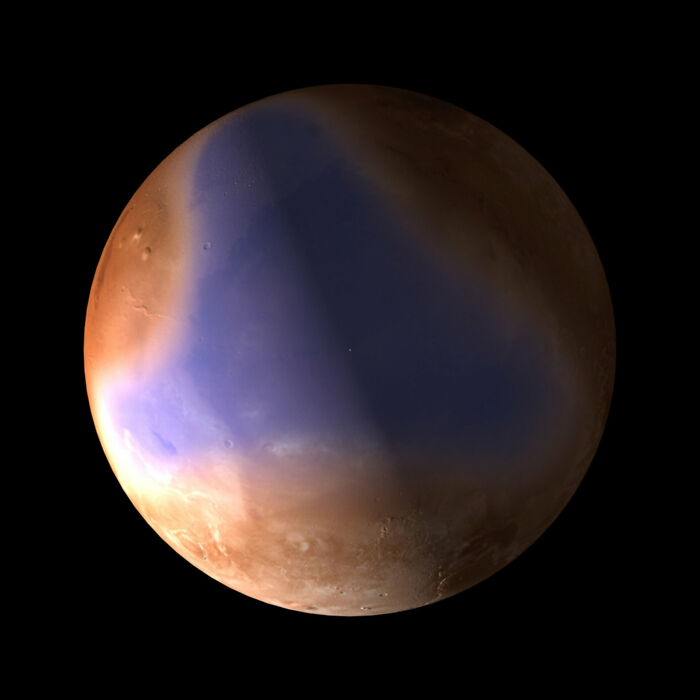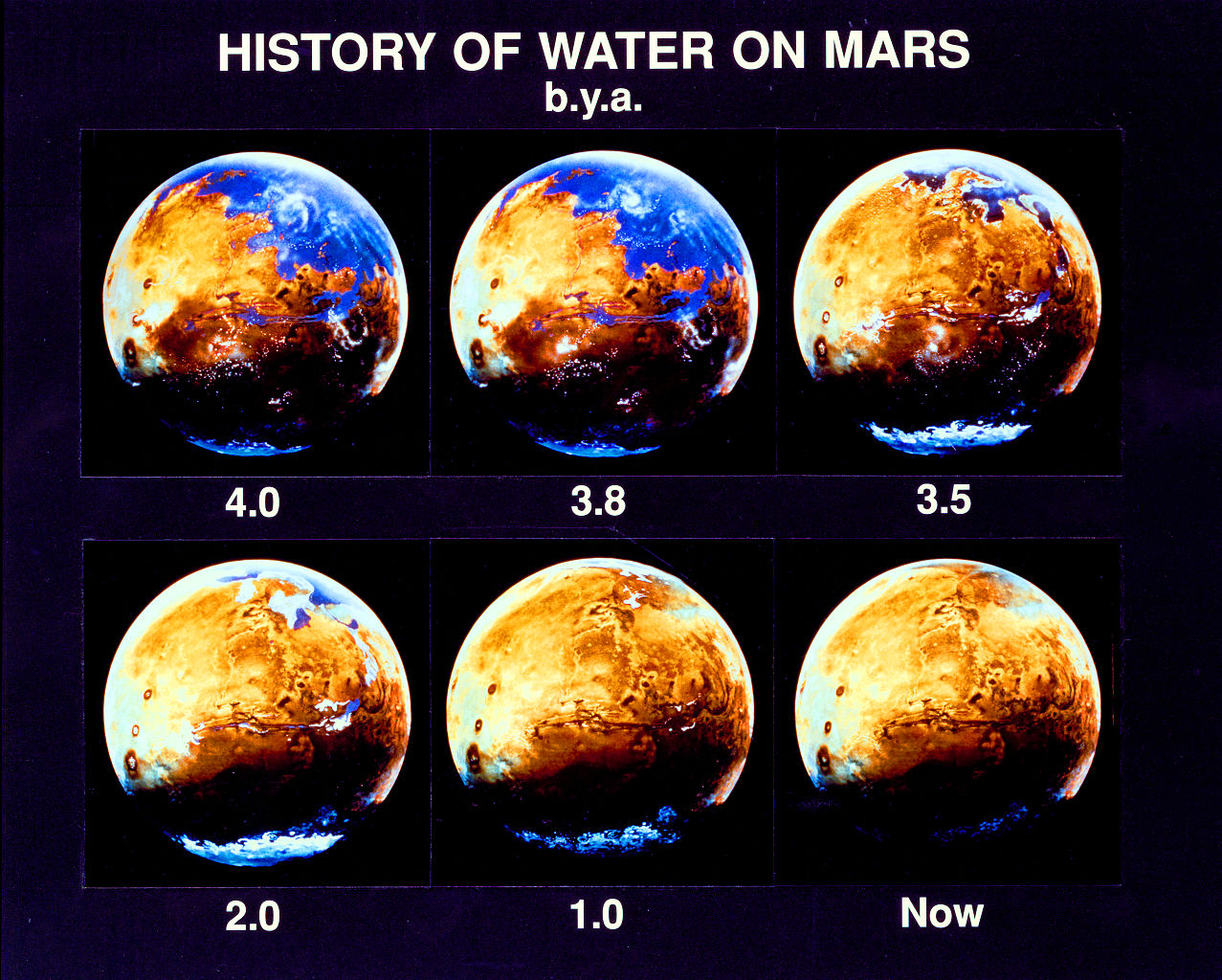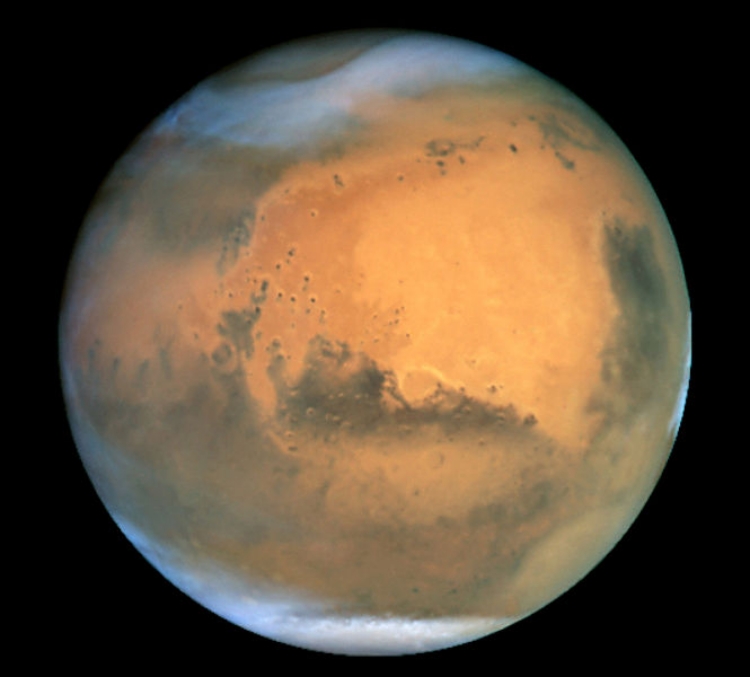Mars is the 7th largest planet in our solar system that, since the 1960s, has been robotically explored more than any other planet beyond Earth.
Mariner 9 images in 1971 revealed the first direct evidence of water on the Red Planet. However, it was only thanks to the recent ESA ExoMars and Mars Express missions that water frost was observed for the first time near the Martian equator, a part where frost was thought to be impossible.
More information: Nature Geoscience
Dr. Adomas Valantinas and his team recently shared news about evidence of water ice observed near the Martian equator
Image credits: European Space Agency
Image credits: European Space Agency
Image credits: European Space Agency
The water ice was discovered above the Tharsis Montes region, atop the Olympus Mons volcano, which rises about 16 miles above the surface of Mars and is 3 times higher than Mount Everest, the tallest not only on Mars, but on the whole The Solar System. The remarkable discovery was made first by the ExoMars Trace Gas Orbiter (TGO), and then by TGO and ESA’s Mars Express.
The new data suggests that the frost is only available to spot a few hours after sunrise before it melts in the sunlight. Since Mars has a much thinner atmosphere than Earth, surface temperatures on the Red Planet can reach as low as 70 degrees Fahrenheit and as low as -225 degrees Fahrenheit.
“We thought it was impossible for frost to form around the Martian equator, as the mix of the sun and the thin atmosphere keeps daytime temperatures relatively high both on the surface and at the top of the mountain – unlike what we see on Earth, where you can expect to see frozen tops,” said Dr. Adomas Valantinas, who made the discovery as a doctoral student at the University of Bern, Switzerland, and is now a postdoctoral researcher at Brown University, USA.
The research team is speculating that perhaps the way air circulates over volcanic mountains creates a very specific microclimate that allows those fine frost particles to form into very thin layers that are about the width of a human hair. Despite being so thin, the frost covers an incredibly large area: the amount of frost represents about 150,000 tons of water, which is equivalent to approximately 60 Olympic swimming pools.
“Its existence here is exciting and hints that there are extraordinary processes at play that are allowing frosts to form,” Valantinas added. “What we’re seeing may be a remnant of an ancient climate cycle on modern Mars where you had rain and maybe even snowfall on these volcanoes in the past.”
Frost observed with TGO’s CaSSIS instrument over the Tharsis Montes region, atop Olympus Mons volcano
Image credits: European Space Agency
Image credits: European Space Agency
Image credits: NASA
Image credits: Sémhur
While this new discovery marks the first time that water frost has been observed near the Martian equator, many of us are probably wondering why it hasn’t been seen before.
“There are several reasons: first, we need an orbit that allows us to observe a location in the early morning. While ESA’s two Mars orbiters – Mars Express and TGO – have such orbits and can observe at any time of the day, many of the other agencies synchronize with the Sun and can only observe in the afternoon,” Valantinas explained.
“Second, frost deposition is associated with colder Martian seasons, making the window to detect it even narrower. In short, we need to know where and when to look for frostbites. We happened to be looking for it near the equator for some other research, but we didn’t expect to see it on top of the volcanoes of Mars!” he added.
The frost was spotted with TGO’s CaSSIS instrument and then confirmed by looking at the area again using TGO’s Nadir and Occultation for Mars Discovery (NOMAD) spectrometer and Mars Express’s High Resolution Stereo Camera (HRSC).
“This discovery was made possible thanks to the successful collaboration between the two ESA Mars orbiters and additional modelling. “Understanding exactly which phenomena are the same or different on Earth and Mars tests and improves our understanding of the basic processes that occur not only on our home planet, but elsewhere in the cosmos,” said Colin Wilson, who is ESA project scientist for both ExoMars TGO and Mars Express.
“Finding water on the Martian surface is always exciting, both for its scientific interest and its implications for human and robotic exploration,” he added. Wilson also noted that this new discovery is truly special because it shows that despite Mars’ low atmospheric pressure, which creates an unusual situation (the planet’s mountaintops are usually no colder than its plains), it appears that moist air can still condense into frost. – an Earth-like phenomenon.
Another study investigated lava tubes on the surface of Mars that, in the future, could provide astronauts with protection from extreme conditions
Image credits: NASA
Image credits: NASA
Image credits: NASA
Another discovery made by another probe recently re-examined a series of mysterious holes about 10 meters wide, which are located in the flanks of volcanoes in the Tharsis region of Mars.
Scientists believe these holes are ‘skylights’, or places where the soil above the lava tubes has fallen and created a hole in the surface. If these lava tubes are similar to what we have on Earth, then according to Brandon Johnson, who is a geophysicist at Purdue University, they could provide astronauts with protection from extreme conditions such as solar radiation, micrometeorites, extreme temperature fluctuations , the winds. and regolith dust storms.
“There’s more than one of these [pits] on Mars that we’ve seen,” said Johnson, who studies impact craters throughout the solar system. “But they’re really interesting because they’re places where astronauts might be able to go and be safe from radiation.”
However, to better understand the conditions, a more detailed investigation is definitely needed.
“On Earth, these lava tubes can be big enough to walk around, but they can also be small or the voids can be discrete or continuous,” said Ross Beyer, who is a planetary scientist at the SETI Institute. .
“So these pits that we see could open into larger caves, or they could just be isolated pits. There’s no way of knowing what’s in them until we explore them in more detail,” he explained.
Johnson mentioned that the best way to get more information about the conditions in the lava tubes would be to physically enter them using a rover: “There are missions proposed where basically a robot would go in a line and fall into one of these sky windows and be able to explore what is inside them.”
Since the mysterious holes could hypothetically provide shelter from the planet’s harsh surface, they might also be the best place to look for possible alien life.
Image credits: European Space Agency
Image credits: NASA
Image credits: NASA
The Tharsis region covers almost 25% of the Red Planet’s surface, and each new study provides scientists with essential information for future exploration and the search for possible signs of life.
At the moment, the only information is from orbital cameras in space, but hopefully soon it will be possible to physically explore Mars. And then, who knows how the most Earth-like planet will surprise us next.
People online were sharing their excitement about the new discoveries on Mars


